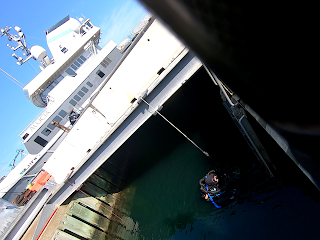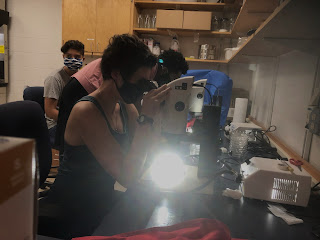Number party
One of the things I'm working on right now is building a model of invertebrate life-histories with a WHOI postdoc, Silke. We had a jam session a couple weeks ago to map out the model . This week, we took the next step, which was turning variables into numbers. We're using the extremely well-studied species Crepidula fornicata as the base for our model. The convenient thing about Crepidula is that enough people have been studying it for enough time that we know exactly how fast it grows at different temperatures, how it responds to stress, how many babies a mother produces depending on how big she is, and even how environmental conditions in one stage carry over to affect the next stage. Silke and I headed outside with our laptops and dug through paper after paper on Crepidula fornicata . Who was it that studied larval growth rates at different temperatures? Where was that figure with adult sizes and fecundities? Has anyone measured the growth rate for juveniles? These were t

